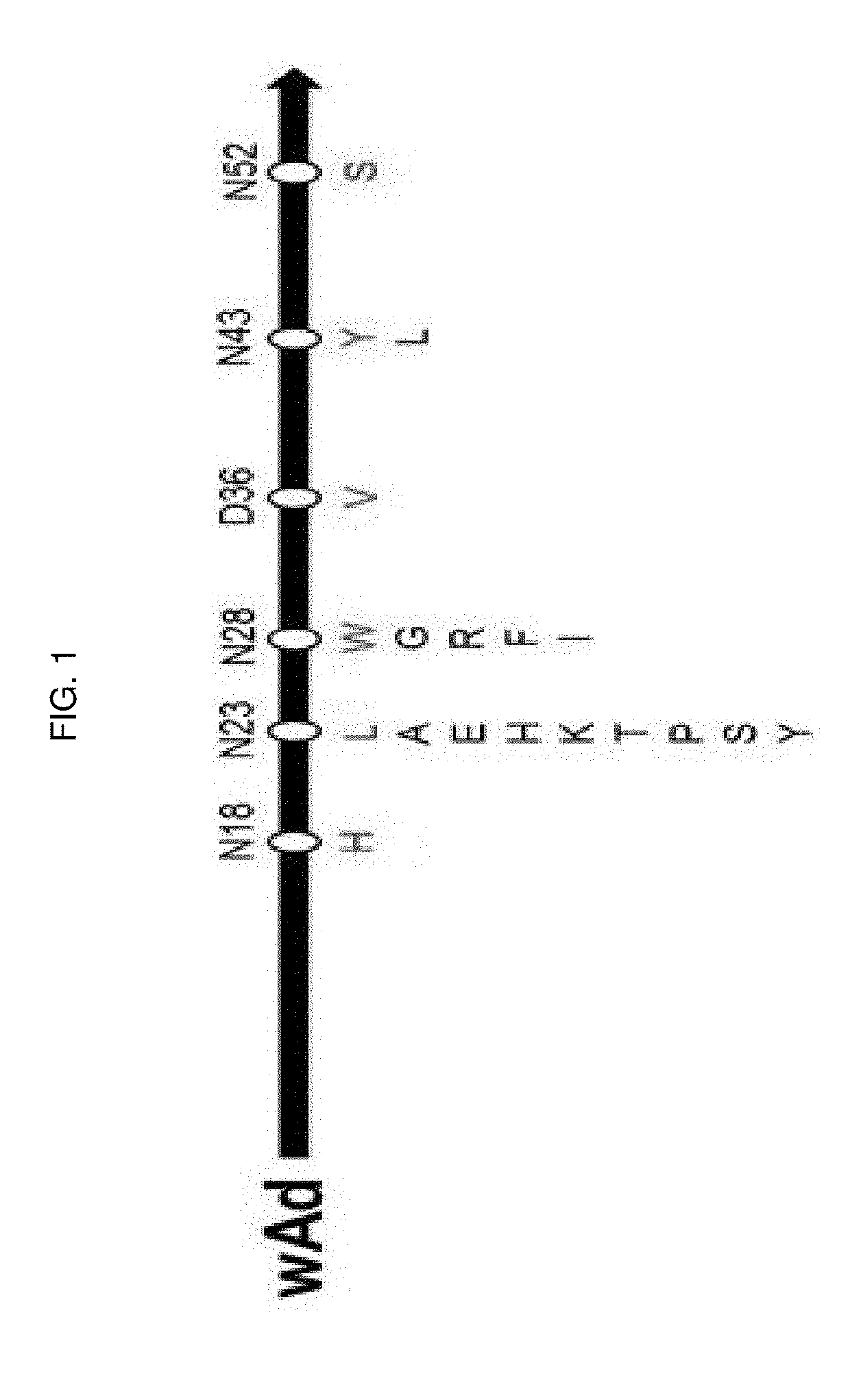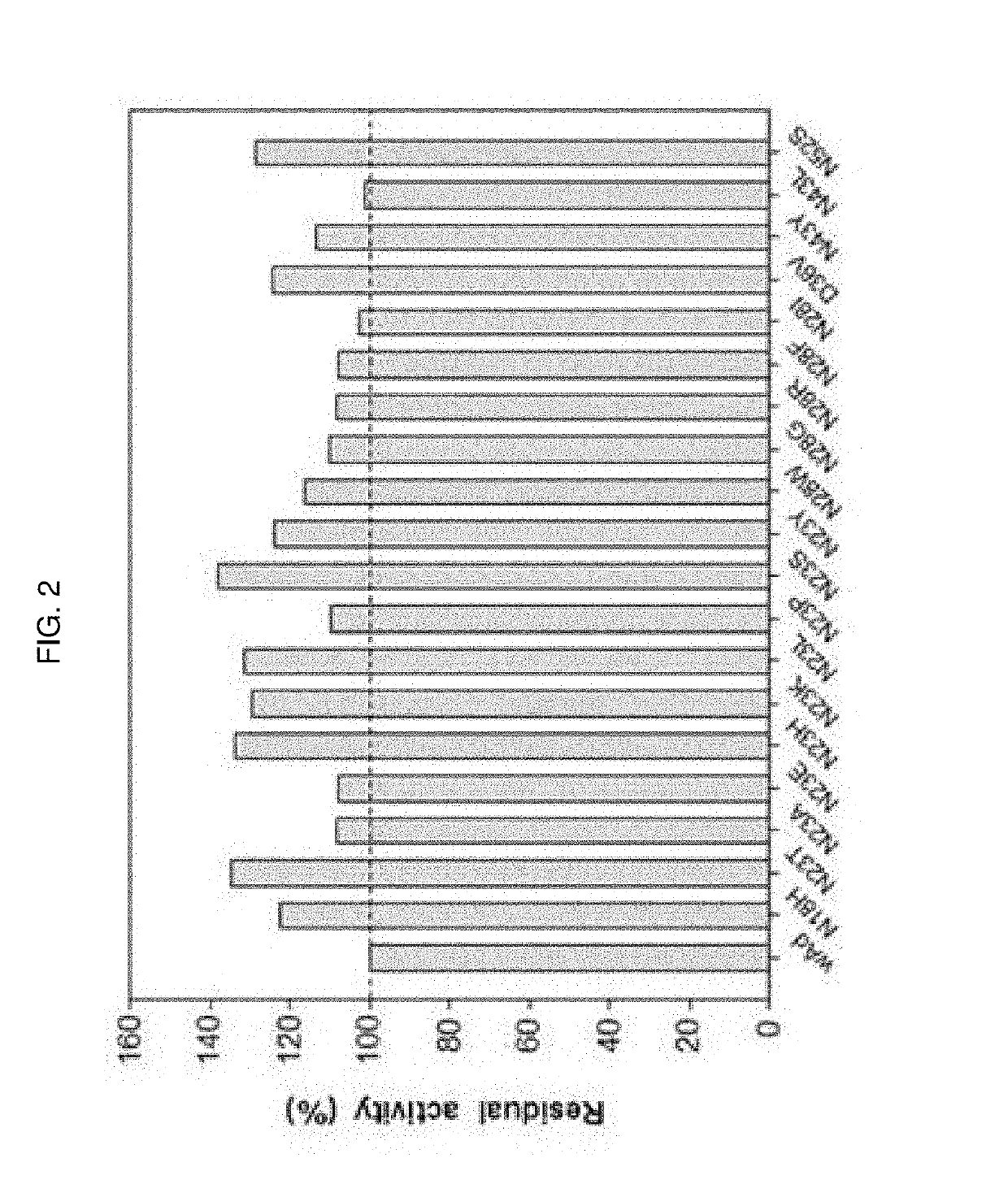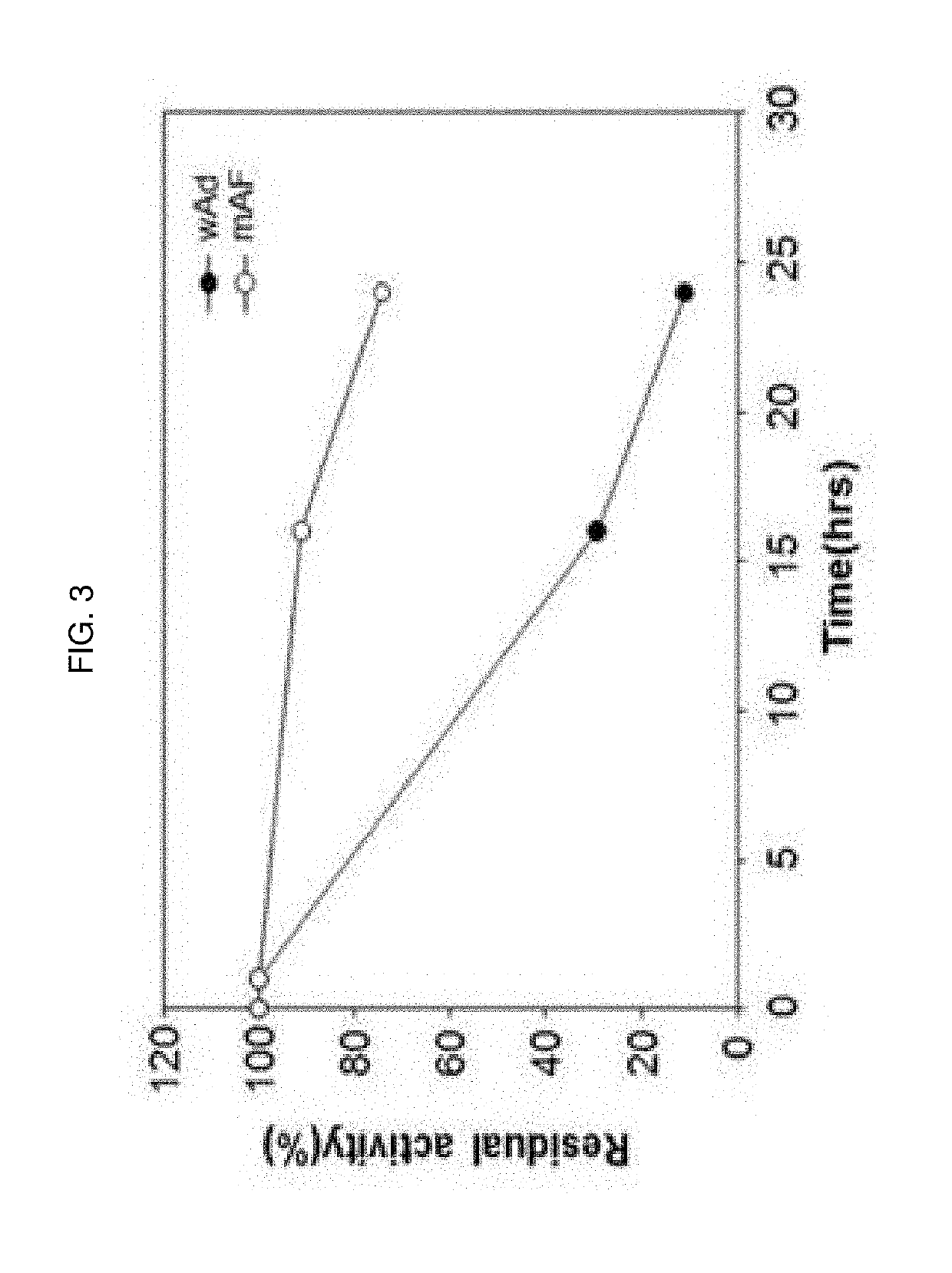Mutated Immunoglobulin-Binding Protein Having Increased Alkaline Tolerance
a technology of immunoglobulin and mutated immunoglobulin, which is applied in the field of mutated immunoglobulin-binding protein having increased alkali tolerance, can solve the problems of limited effect, weak resistance, and limitation of use of naoh, and achieve the effect of improving alkali tolerance and stability
- Summary
- Abstract
- Description
- Claims
- Application Information
AI Technical Summary
Benefits of technology
Problems solved by technology
Method used
Image
Examples
example 1
n of Fc Protein of Recombinant Immunoglobulin G for Improvement
[0122]1-1. Synthesis of Fc Domain Gene of Immunoglobulin G
[0123]The sequence encoding the Fc polypeptide from human IgG1 was found through Blast at the NCBI site (GenBank accession no. Y14735) and was synthesized by Cosmogenetech (Daejeon, Republic of Korea).
[0124]1-2. Preparation of pET-Fc Plasmid
[0125]A pET-Fc plasmid was prepared by inserting the Fc gene obtained in Example 1-1 into the NdeI and XhoI restriction enzyme recognition sites of the pET29a (+) vector (Stratagene, USA). The details are as follows:
[0126]The Fc gene DNA product obtained by the synthesis in Example 1-1 was digested with restriction enzymes NdeI and XhoI, and then purified with a purification kit (QIAEX Gel Extraction Kit; Qiagen, Germany), and used as an insert DNA. Also, a DNA fragment in which pET29a (+) vector DNA was digested with restriction enzymes NdeI and XhoI and dephosphorylated with CIP was used as a vector DNA. The inserted DNA and ...
example 3
vement Using Error-Prone PCR Method
[0133]3-1. Preparation of wAd Mutant Library by Error Prone PCR
[0134]To artificially induce a random mutation in the nucleotide sequence of the synthesized wAd gene, a mutant library was prepared by performing error prone PCR. The procedure for preparing a specific mutant library is as follows: Error prone PCR was induced to produce 1-2 mutations per 1000 bp using a Diversity Random Mutagenesis kit (Clontech, USA), PCR reaction solution was comprised of 1 ng of pBC-wAd plasmid as template DNA, 10 pmol of each of EP-F primer (SEQ ID NO: 14) and T7 primer (SEQ ID NO: 15), 40 μM dGTP, Diversity dNTP mix and TITANIUM Taq polymerase, respectively, while its final volume was adjusted to 100 μL. The PCR was performed using Takara PCR Thermal Cycler (Takara, Japan), while its reaction conditions were as follows: the reaction mixture was pre-denatured at 94° C. for 30 seconds, denaturation at 94° C. for 30 seconds, annealing at 55° C. for 30 seconds, and po...
example 4
vement Using Site-Saturation Mutagenesis Method
[0139]4-1. Construction of wAd Mutant Library by Site-Saturation Mutagenesis
[0140]A site-saturation mutagenesis library was constructed for the six amino acid residues (N18, N23, N28, D36, N43, N52) selected in Example 3-2 to further confer alkali tolerance. Specifically, in order to prepare a library in which the 18th amino acid was mutated, AEP1 (SEQ ID NO: 3) inserted into pBC KS (+) vector was used as a template with 18-F primer (SEQ ID NO: 16), 18-R primer (SEQ ID NO: 17), pFU-x Reaction buffer, 10 mM dNTP, pFU-x polymerase obtain to a final volume of 50 μL. Reaction conditions were as follows: the reaction mixture was pre-denatured at 95° C. for 1 minute, while denaturation at 95° C. for 50 seconds, annealing at 53° C. for 50 seconds, and polymerization at 68° C. for 3 minutes, which were repeated 18 times and then post-polymerized at 68° C. for 10 minutes. The PCR product obtained under the above conditions was treated with restr...
PUM
| Property | Measurement | Unit |
|---|---|---|
| concentration | aaaaa | aaaaa |
| pH | aaaaa | aaaaa |
| concentration | aaaaa | aaaaa |
Abstract
Description
Claims
Application Information
 Login to View More
Login to View More - R&D
- Intellectual Property
- Life Sciences
- Materials
- Tech Scout
- Unparalleled Data Quality
- Higher Quality Content
- 60% Fewer Hallucinations
Browse by: Latest US Patents, China's latest patents, Technical Efficacy Thesaurus, Application Domain, Technology Topic, Popular Technical Reports.
© 2025 PatSnap. All rights reserved.Legal|Privacy policy|Modern Slavery Act Transparency Statement|Sitemap|About US| Contact US: help@patsnap.com



